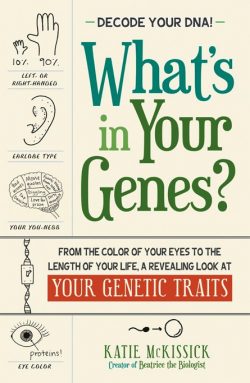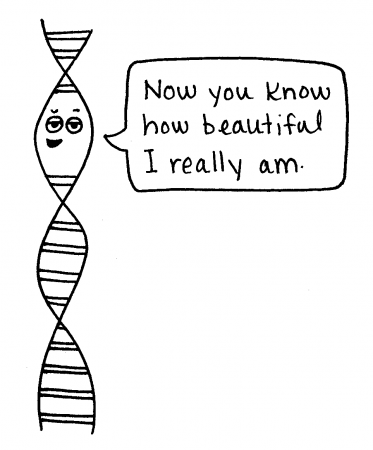Cartoons help make basic genetics fun


But the process of learning those things was dull. I only wish that back then I could have access to something like Katie McKissick’s new book.
A former high school biology teacher, she’s now a science writer and cartoonist. McKissick brings all of her skills to What’s in Your Genes? This 256-page genetics primer starts with the basics of DNA, the instruction manual of our cells. The book then builds on this basic knowledge of genetics to answer many of the questions that pop up every day. Why are your eyes brown? Why is your hair curly? What does your blood type mean? And will your brother go bald?
McKissick includes sections on what getting your DNA “read” by companies like 23andMe can tell you; on who owns your DNA; and how our genetic inheritance can be complicated by epigenetics (the switches that turn your genes on and off). The book is a fast-paced, entertaining intro to you and your DNA in the 21st century.

The only false notes come from some of the jokes. They aren’t bad jokes, but most middle school and high schools students may not relate to Monty Python and the Holy Grail or Jurassic Park, movies that came out long before they were born. And I suspect many kids won’t know where “Debbie Downer” comes from (Saturday Night Live episodes between 2004 and 2010).
McKissick provides a charming introduction to genetics. The breadth of topics that she covers should prepare readers in high school and above to dig deeper into genetics.